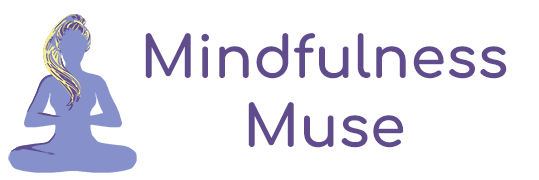Identify 5 Common Obstacles to Mindfulness

“Do you have patience to wait until your mud settles and the water is clear? Can you remain unmoving until the right action arises by itself?” – Lao Tzu
When we are beginning to learn about and practice mindfulness as a new habit in our everyday lives, it is natural to experience some frustration. We often spend much of our lives learning how to become better “doers” in a culture that teaches and values results. Learning how to practice living our lives with active awareness can feel surprisingly difficult. Dr. Jon Kabat-Zinn, well-known for his work in the area of mindfulness, reminds us that mindfulness is a practice unconcerned with “producing results.” It is focused on being and non-doing.
Kabat-Zinn likens the importance of mindfulness to tuning an instrument before performing. How often do we really focus on why we are doing something? We often end up just doing – going through the motions of our day-to-day lives with some vague notion that all of these actions that we are engaging in are getting us closer to what we believe to be our goals. Sometimes it is helpful to take a pause out of this motion and doing to simply “be.”
Common Obstacles to Mindfulness
In the Dialectical Behavior Therapy Skills Workbook (McKay, Wood, & Brantley, 2007), five common obstacles to mindfulness are addressed:
(1) Desire
When desire blocks us from mindfulness, we are yearning for things to be different – now! This can be as simple as wishing that we didn’t feel so lousy to wishing that someone or something would just “be” different. It is common for the desire to be a “better” meditator to block us from being truly present. Try noticing the different ways that your desire blocks you from being able to accept what is.
(2) Aversion
When aversion blocks us from mindfulness, we are resisting our present-moment experience in some way. This aversion can manifest itself through denial, fear, or even boredom. It is common to be blocked by aversion through the very activity of judgmental thinking. How does your judgment of the present moment block you from being truly present to your currently unfolding experience?
(3) Sleepiness
When we are tired, it is difficult to be alert and aware of the present moment. There are different kinds of sleepiness to notice within your own experience: actual physical fatigue and resistance to something that you are experiencing in your mind or body. Sometimes, when we are experiencing fearful or painful emotions, the body reacts to this internal resistance through a sensation of sleepiness. It is helpful to begin practicing how to distinguish between the two in your own life.
(4) Restlessness
This feeling is quite the opposite of feeling sleepy, heavy, or dull. This obstacle to mindfulness may be experienced as an uncomfortable storm or flurry of thoughts, emotions, and physical sensations. There may be a sense of feeling distracted, irritable, or in constant motion. It is often when we are experiencing this particular block to mindfulness that we could benefit from mindful awareness the most.
(5) Doubt
This obstacle to mindfulness is reminiscent of that pesky little voice in the back of your mind that says, “I can’t handle this,” “I’m not any good at this,” or “I’ll never be able to do this.” Doubt often comes up for us as an internal belief about our ability to do something or to handle something. It is borne out of fear and resistance. This is a common experience. Notice when you experience these thoughts of self-doubt and begin to let them go.
It can be helpful to begin to change your experience with mindfulness by changing the way that you think about these obstacles. Rather than experiencing desire, aversion, sleepiness, restlessness, or doubt and feeling overwhelmed or depressed, begin to think of these obstacles as opportunities for growth. Your own personal obstacles to mindfulness are your teachers if you will allow them to be. Listen to what your own obstacles and challenges are trying to tell you.
Begin to practice tolerating distress by recognizing it for what it is, accepting its presence, and then releasing it. These obstacles do not have to keep you stuck in the mud unless you permit them to. It is simple, but it is not easy. Few things worth their salt are. How will you choose to handle these obstacles to mindfulness in the future?
– – – – – – – – – – – – – – – – – – – – – – – – – – – – – – – – – – – – – – – – – – – – – – – – – – – – – – – – – – – – – – – – –
Google. (Producer). (2007). Mindfulness with Jon Kabat-Zinn. [Web]. Retrieved from http://www.youtube.com/watch?v=3nwwKbM_vJc
McKay, M., Wood, J.C., & Brantley, J. (2007). The dialectical behavior therapy skills workbook. Oakland, CA: New Harbinger Publications, Inc.
Featured image: Embrace of the Endless Ocean by notsogoodphotography / CC BY 2.0
